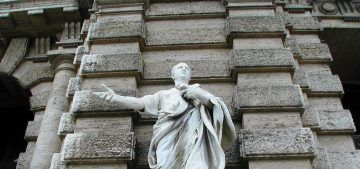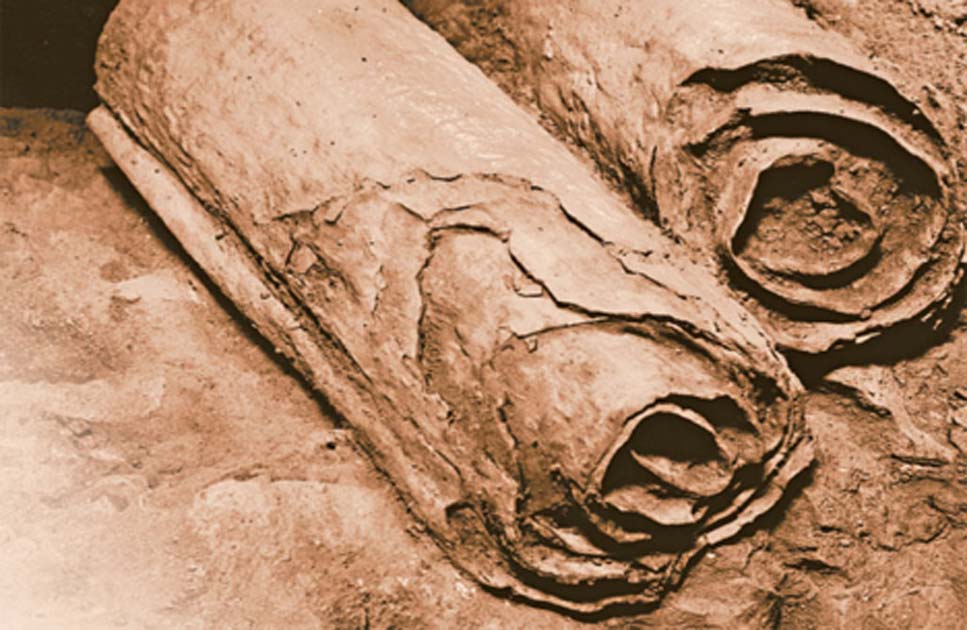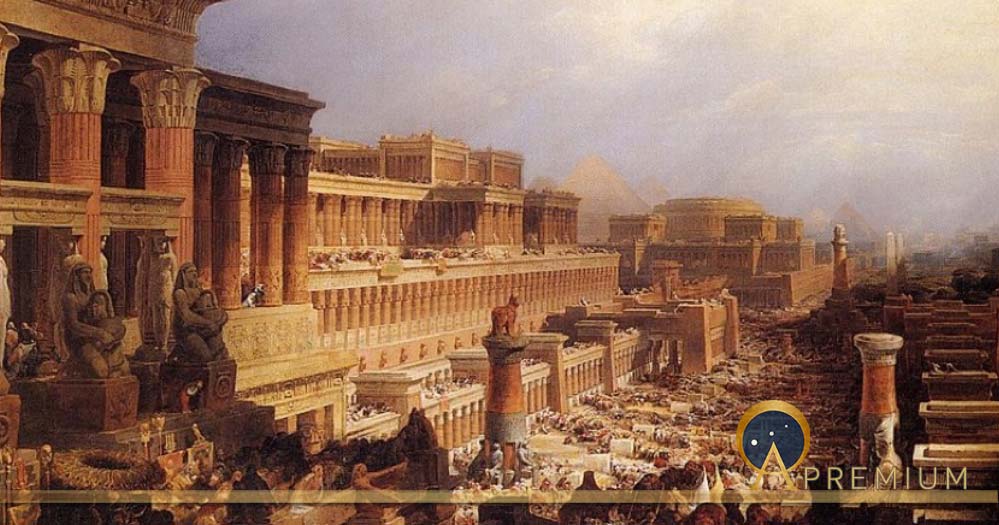via 3 Quarks Daily posted by Azra Raza: Tracy Lee Simmons in City Journal:

Photo: ra-photos/iStock
New translations of classical texts deliver ancient thought in a compact, readable format.
Back in the 1940s, C. S. Lewis remarked on a trend that he saw gaining steam even among some of his better pupils at Oxford: a belief that books penned by the greatest minds of the previous two or three millennia could be grasped only by credentialed professionals. This instinct steered them away from the satisfactions of primary literature and into the swamps of secondary works expounding upon the original sources. “I have found as a tutor in English Literature,” Lewis wrote, “that if the average student wants to find out something about Platonism, the very last thing he thinks of doing is to take a translation of Plato off the library shelf and read the Symposium. He would rather read some dreary modern book ten times as long, all about ‘isms’ and influences and only once in twelve pages telling him what Plato actually said.” Lewis was not denigrating commentaries; he wrote some formidable ones himself. He was merely making the point that most great writers of the distant past wrote to be read and apprehended by curious minds, not merely to provide fodder for exams and dissertations.
Continue reading
==============================
via Interesting Literature
In this week’s Dispatches from The Secret Library, Dr Oliver Tearle reviews a formative early work of fantasy fiction
In the early 1950s, shortly before J. R. R. Tolkien published his landmark novel The Lord of the Rings, the Danish-American author Poul Anderson wrote two short fantasy novels which would have less of an influence on the course of fantasy fiction, but which now read as considerably more ‘modern’, in many ways, than Tolkien’s three-books-in-one epic. One of these novels, The Broken Sword, was published in 1954, the same year that the first volume of Tolkien’s novel appeared. A year before that, however, Anderson had published another fantasy novel, which drew inspiration from Tolkien’s earlier The Hobbit but which moved fantasy into a new direction. That novel was Three Hearts and Three Lions. Despite its title promoting the ‘rule of three’ not once but twice, this was not a huge three-decker novel on the scale of The Lord of the Rings, nor the first novel in a vast trilogy. Instead it’s a novel that doesn’t even run to 200 pages in my edition.
Continue reading
==============================
via ResearchBuzz Firehos (Tara found it on Reddit)
Another find via Reddit: a database covering popular music in movies and television from the 1920s to 1981. It’s called Lights, Camera Backbeat.
From the About page: “LCB starts at the beginning of synchronised sound and film with early Vitaphone and Phonofilm musical shorts in the 1920’s and continues up to the birth of MTV in 1981. The 1980’s launched a new era in music on film with a massive increase in music videos produced for TV use as well as home video product on VCR and Betamax. Prior to 1981 there were often only limited chances to see major pop music performers on TV and in the cinema, particularly if you lived outside the USA.” I did a couple of quick searches; the database did not contain Paul Anka’s performances in GIRLS TOWN and did not contain Mamie Van Doren’s songs from UNTAMED YOUTH. So lots of results, but nowhere near complete.
I have to admit that I have not had a play with this YET.
==============================
via Ancient Origins by Ashley Cowie

The Dead Sea Scrolls
Among the thousands of pieces of parchment found in caves near the Dead Sea, one scroll was unique among the rest. The Temple Scroll was the best preserved and with the clearest writing. Now scientists have revealed that ancient technology, involving the application of minerals and salts that came from afar, helped preserve this unique text.
Continue reading
==============================
via The Black Stump
Charles Chaplin’s very own and painstakingly preserved professional and personal archives: photographs, screenplays, letters and much more.
See more here
==============================
via Interesting Literature
All 27 of the known moons of the planet Uranus are named after characters from the work of Shakespeare and Alexander Pope. Astronomers have paid tribute to the poets; but what have poets had to say about outer space? Below, we’ve selected ten of the greatest poems about space, astronomy, and the solar system. We’ve also included some of our favourite poems about the moon, to fit in with the ‘space’ theme; you can find more great moon poems here.
Continue reading
==============================
via the OUP blog by Andrea Nini

Shallow Focus Photography of Magazines’ by Digital Buggu. CCO public domain via Pexels.
Many of us know the name Jack the Ripper. Perhaps we associate it with a dark shadow wearing a top hat and holding a knife in the middle of a foggy street in Victorian London. But not many of us know that this image is very far away from any reliable fact that has reached us about the 1888 tragic events that took place in Whitechapel. One of the most fascinating aspects of the Whitechapel murders is indeed how long they survived in the collective imagination and how distant their recollection is from anything we know to be true.
Continue reading
==============================
via Ancient Origins by Ted Loukes

Departure of the Israelites, by David Roberts (1829) ( Public Domain )
The actuality of the Israelites’ exodus from Egypt has probably generated the most discussion and argument among scholars of Biblical times. Various sources recount that the Israelites were settled in the land of Rameses, also called Goshen.
“And Joseph settleth his father and his brethren, and giveth to them a possession in the land of Egypt, in the best of the land, in the land of Ramesses, as Pharaoh commanded.” ( Genesis 47.11).
“And the great company escorted Jacob and his family to Egypt, and there Joseph gave to his relatives the best of the land, even Goshen.” (The Talmud : Selections , Polano, 1876).
Continue reading
==============================
via ResearchBuzz Firehose: Will Taylor in Maidenhead Advertise
A website dedicated to an organisation vital to victory in the Second World War has been launched.

Maidenhead Heritage Centre’s free online resource showcases more than 130 logbooks, hundreds of photos and other documents about the Air Transport Auxiliary (ATA), which was based in White Waltham. It would ferry military aircraft between airfields and was notable for letting women pilot planes when they were barred from doing so in the RAF.
Richard Poad, chairman of the Park Street centre, said: “The website contains a gold mine of information which will be of great interest to historians, writers and film makers.
“One of the very first users of the online archive was in Australia, one of 25 countries from which ATA’s volunteer aircrew came.”
Visit atamuseum.org
As a result of this I went down a rabbit hold looking for a Nevil Shute novel that I was convinced mentioned White Waltham. I am convinced that it is “In the Wet“ but the synopsis on Wikipedia does not mention it! I could, of course, go upstairs and fish the actual printed book of the shelf but that is yet another rabbit hole.
==============================
via Interesting Literature
In this week’s Dispatches from The Secret Library, Dr Oliver Tearle enjoys the adventures of the Puritan swordsman, Solomon Kane
Some writers have just one great character in them. Conan Doyle created a range of memorable characters, from Professor Challenger to Sir Nigel Loring of the Hundred Years’ War, but his name is now linked to one of his creations above all others. Mary Shelley wrote the first post-apocalyptic novel among other works of fiction, but her name now means ‘Frankenstein’. And for many, the name Robert E. Howard, if it conjures a fictional character at all, summons ‘Conan the Barbarian’ or ‘Conan of Cimmeria’.
Continue reading
No comments:
Post a Comment